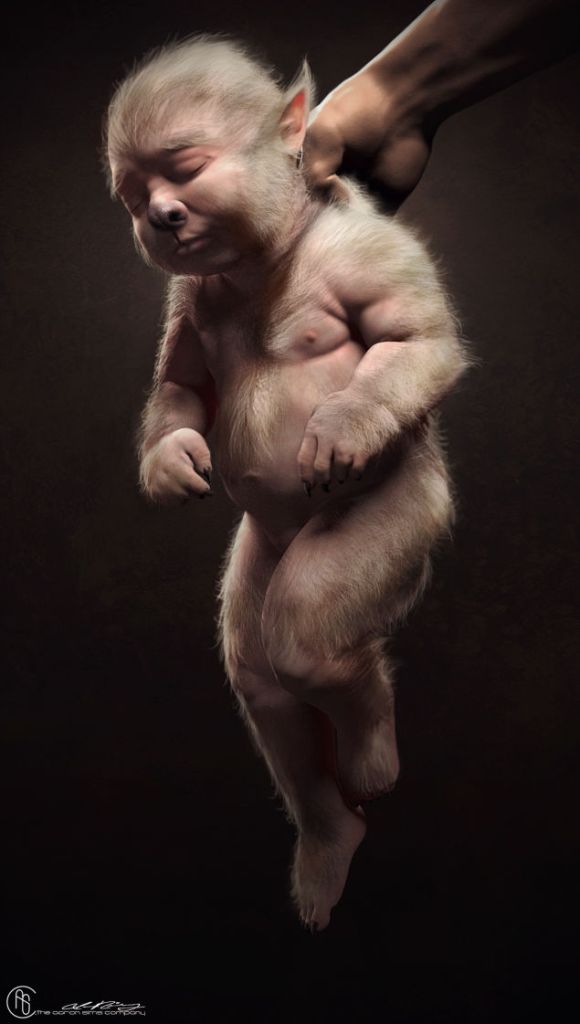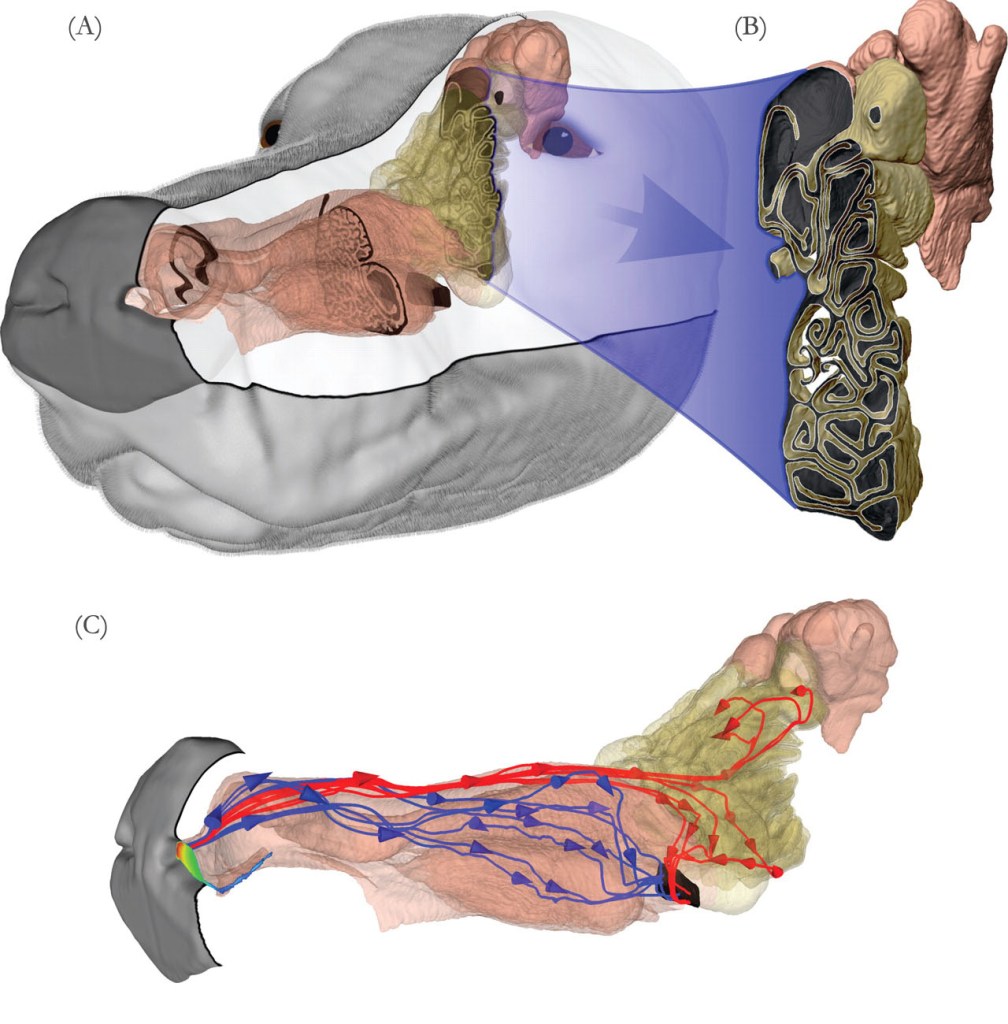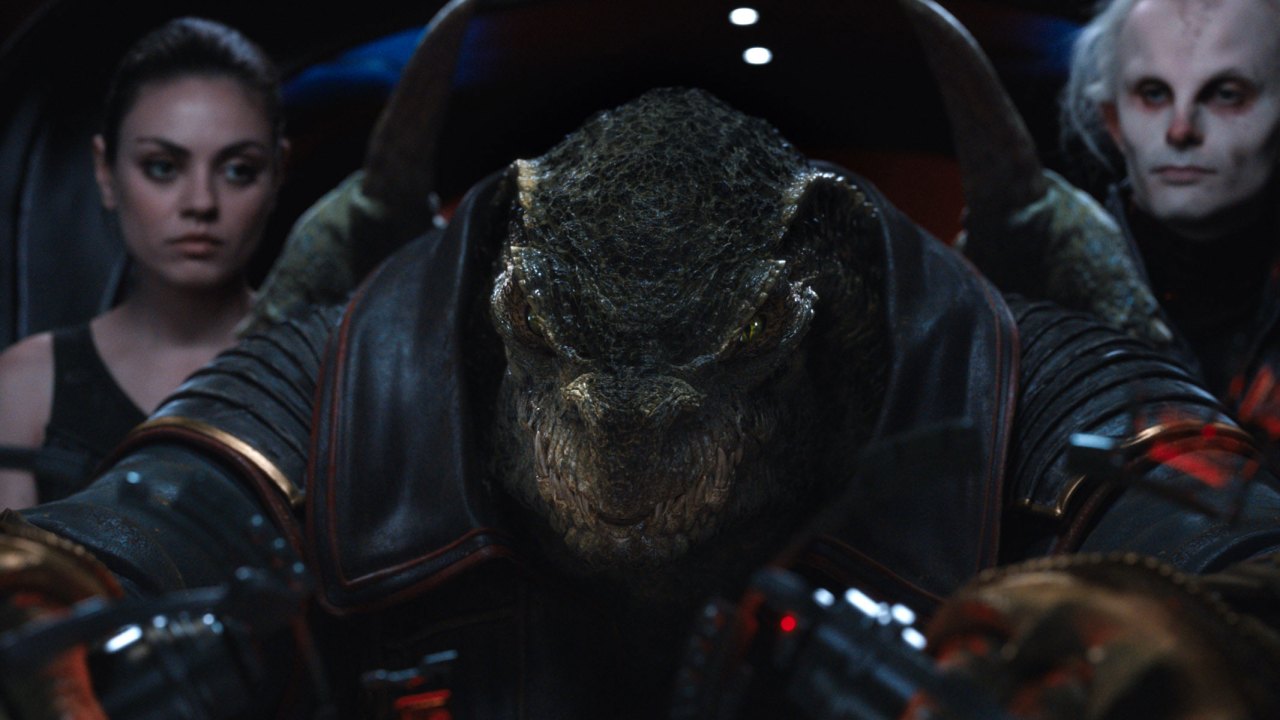In the real world, peer review determines whether scientists receive funding or publish their work in scientific journals. Without positive evaluations from the members of a grant review board, a scientist won’t be able to science for very long, because she’ll be out of money when her grant proposal isn’t funded. In the fictional world, there are a lot of scientists who are shockingly bad at science. If only their grant proposals had been reviewed by a panel of qualified scientists…
Description of Project (provided by applicant)
The development of novel animal-human hybrids, specialized for tactical deployment, is a long-standing military priority of House Abrasax. This research takes advantage of current genetic engineering technologies to endow a new class of soldier with specializations for advanced tracking and group loyalty. We have developed targeted gene insertions that produce human hybrids enhanced with two major canine attributes: excellent olfactory acuity and pack-driven social dynamics. Genetically engineered subjects possess superior tracking abilities; a test case (see Figure 1) can locate an individual human at a distance of 588 million kilometers. Furthermore, by utilizing the canine species, associated pack dynamics can be relied upon to ensure unit cohesion and loyalty.

Figure 1: A Young Wolf/Channing Tatum Hybrid. Via Aaron Sims Company.
Feedback from Review Panel
Significance of Proposed Project: Strong
The Abrasax industrial complex relies upon highly advanced technologies for healthcare and transportation.
 Despite rapid technological advances in certain areas, the development of devices for locating and tracking individuals over long distances has stalled. Previously, the authors have developed military-grade honeybee-human hybrids. The authors now propose to endow humans with two canine features: high acuity olfaction and pack social dynamics. If successful, the authors claim these hybrids will act as high-acuity trackers suitable for military deployment.
Despite rapid technological advances in certain areas, the development of devices for locating and tracking individuals over long distances has stalled. Previously, the authors have developed military-grade honeybee-human hybrids. The authors now propose to endow humans with two canine features: high acuity olfaction and pack social dynamics. If successful, the authors claim these hybrids will act as high-acuity trackers suitable for military deployment.
Proposed Approach: Poor
The application has a very clear aim, and the authors have previously demonstrated relevant technical expertise in the field of genetic engineering. In previous centuries, humanity has utilized domesticated canine tracking with great success, with behavioral training permitting relatively clear communication between the species. The olfactory superiority of canine species over baseline human abilities (a 10,000-100,000 times greater sensitivity to certain odors) makes the canine olfactory system a strong candidate donor system. In addition, the use of a mammalian donor species may offer practical advantages given baseline genetic similarities.
However, several significant weaknesses have been identified:
Specialized Anatomy
In species with a feeble sense of smell, such as humans, simpler olfactory structures are located on the upper part of the nasal cavity, which carries both olfactory and respiratory air streams. In contrast, animals with a keen sense of smell, such as canines, have bony plates that physically separate their highly complex olfactory structures from the respiratory air path (see Figure 2).

Figure 2: The canine nasal specializations. A) 3D structure of the canine nasal pathway. Olfactory regions are shown in yellow, whereas respiratory regions are shown in pink. B) The airflow dynamics inside the canine nose. Olfactory airstreams are shown in red, respiratory airstreams are shown in blue. Adapted from Craven et al 2010 (figures 1 and 7), under CC-BY 4.0 license.
This specialized anatomy is thought to optimize transport of odors to olfactory receptors. Airflow through the structure only occurs during inhalation; during exhalation, airflow does not travel through the olfactory region. Unidirectional airflow through nasal structures provides additional time for inhaled odor molecules to activate the olfactory receptors, likely enhancing the odor discrimination abilities of keen-scenting animals. Furthermore, these animals could localize the source of different odors by independently controlling their left and right nostrils. (For more detail on the fluid dynamics of canine olfaction, we recommend this 2010 article by Craven and colleagues.)

Figure 3: A reptile-human hybrid. Via Warner Bros.
Based on the external morphology of the nasal area, preliminary specimens have human nasal architecture and airflow dynamics. Given the evidence that anatomical specializations play a critical role in canine olfactory acuity, why have the authors not adapted human skulls? These changes should be trivial in comparison to the anatomical modifications of the recent reptile-human hybrids, which included adding wings and tails
Fluid Pack Dynamics
The authors suggest that the canine pack mentality will provide a distinct advantage towards the stabilization of martial groups. Human social behaviors are complex, and remain poorly understood. The previous iteration of military hybrids used insect social hierarchies; here, the authors describe canine pack dynamics as better suited for military tracking.
It is unclear to what extent the authors have fully considered the nuances of canine pack dynamics. Although canine hierarchies may appear hardwired to outside observers, in reality, pack hierarchy is flexible, and based around reproductive access to opposite-gendered individuals. Any individual member of a wolf pack has the capacity to ascend the social hierarchy. In a captive population (which bears some resemblance to a compulsory military unit), pack members are constantly vying for status, and dominant individuals actively enforce pack hierarchy. In non-captive populations, there are fewer fights, due in part to the ability of low status animals to leave the pack in search of mates. In the context of a military organization, either schema is highly disadvantageous. Imagine a scenario wherein an individual canine-human hybrid chooses to disregard military allegiance in favor of a potential breeding partner.

Figure 4: A low-status male canine will leave an established pack to search for a breeding partner. Via Warner Bros.
A species with an innate dominance hierarchy would appear more suited for military applications. Social insects (including ants and bees) have genetically programmed, stable hierarchies. Whereas individual canines act to maximize their own reproductive fitness, social insect behavior is structured around the survival of the colony. In military context, this latter focus has clear advantages.
Furthermore, although canine packs can hunt co-operatively, social insects have evolved complex behaviors dedicated to the dissemination of tracking information to other hive members. These behaviors, such as the honeybee waggle dance, could be utilized as a species-specific, and thus militarily secure, communication pathway.
Flight Specializations
In Specific Aim 3, the authors discuss the possibility of developing flight capabilities in canine-human hybrids. They fail to address issues related to flight mechanics, including increased weight due to canine bone density, practical wingspan required to lift large humanoids, and how animals specialized for terrestrial navigation will adapt to the demands of 3-dimensional navigation. Birds and flying insects use specific visual signals to guide rapid movement during flight. Sensory systems that evolved for terrestrial use may be less able to utilize these signals during flight, leading to significant deficits in a variety of visually guided aerial maneuvers. Again, the authors should explain their decision to abandon insect donors, which naturally include genetic programs for wing production.
Human Base Genetic Profile
Finally, the authors do not discuss the human gene pool selected for hybridization. Prior to funding, the authors should submit detailed analyses on the behavioral predisposition of the selected human genetic background. In particular, the authors should report how they intend to avoid the issues faced by the honeybee-human hybrids (see: Report Concerning Premature Demise of Honeybee-Human Hybrids Due to Maladaptive Heroic Tendencies).
In conclusion, the panel recommends the authors re-examine the exclusive use of canine genetic donors, potentially in favor of social insect donors. In particular, the authors should discuss the feasibility of adapting their previous honeybee hybridization program to include advanced tracking abilities.
Astra Bryant has a PhD in Neuroscience from Stanford University and has been an active scientific researcher for over 10 years. She is the founder and senior editor of the NeuWrite West Neuroblog, where she writes about neuroscience for a general audience. She was named after Princess Astra of Atrios, the sixth Key to Time, which left her no option but to become both a Doctor and a science fiction nerd.
–Please make note of The Mary Sue’s general comment policy.–
Do you follow The Mary Sue on Twitter, Facebook, Tumblr, Pinterest, & Google +?








